In a trend process, the trend is a known influence. A technically induced trend. Replacement of broaches, retightening of grinding wheels, replacement of worn tools in general.
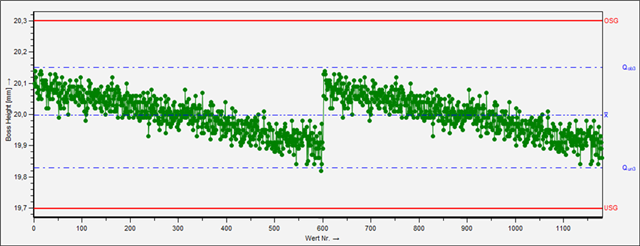
As can be seen here in the example, it is therefore known that the measured values will fall or rise over the value chart. It is also possible that such processes first run without a trend and then fall or rise. Think of broaches whose finishing blades keep the process stable for a long time until a fall / rise is visible.
However, what always determines the technical trend is that you have to try to give the production more space and you can then decide what a critical limit is.
Here, too, there is another option for the evaluation strategy.
The characteristics mask can be used to specify whether the trend is ascending or descending (this MUST be done by the user! The tests for trend available in the strategy do not work for this. This action must be a conscious action by a process owner, which is indicated by the technical trend).
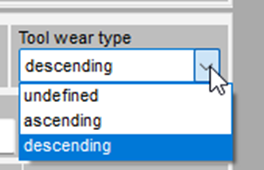
A substrate can be created in the evaluation strategy that reacts to this:
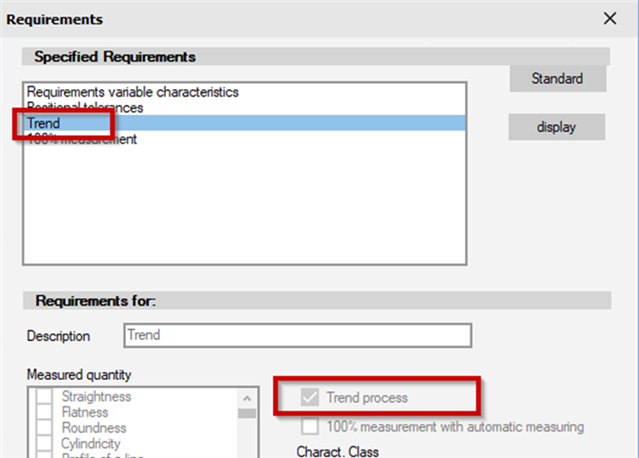
When the sub-strategy for trend processes is created, a special feature is added to the requirements: The "non-critical index":
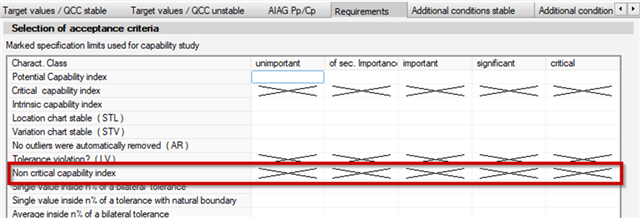
Anyone familiar with the theory of the critical index knows that it is calculated towards the upper limit and towards the lower limit. The smaller of the two values is the critical index (exception: characteristics with a natural tolerance).
However, if the strategy for a trend process is defined in this way, the theory is ignored. Then the following applies:
The limit from which one is moving is the non-critical limit
The limit towards which you are moving is the critical limit
The potential index is then no longer relevant, as both limits are secured by their own limit value:

The non-critical index can be output with this output point:
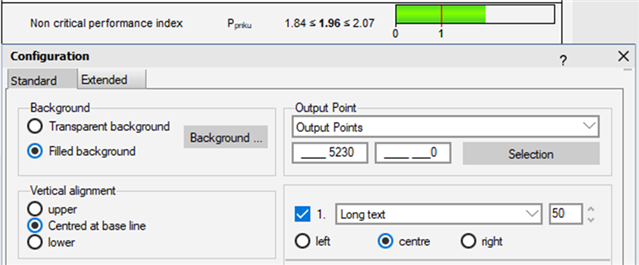
The identifier is always extended by "u" or "l" for "upper" or "lower". For philosophical reasons, the new Q-DAS strategy always outputs the characteristic value as "P", as a trend process can be assumed to be unstable before this.
In most strategies created so far, the target value of the non-critical limit was set to 1.00, which is the limit from which the process will always move away.
